Building of the Day: 330 Himrod Street
Brooklyn, one building at a time. Name: Former Dannenhoffer’s Glass Works Address: 330 Himrod Street Cross Streets: Wyckoff and Irving Avenues Neighborhood: Bushwick Year Built: around 1888 Architectural Style: Victorian factory Architect: probably Theobald Engelhardt Other Buildings by Architect: Factories, breweries, warehouses, flats buildings, row houses, churches and free standing houses throughout Bushwick, Williamsburg and…
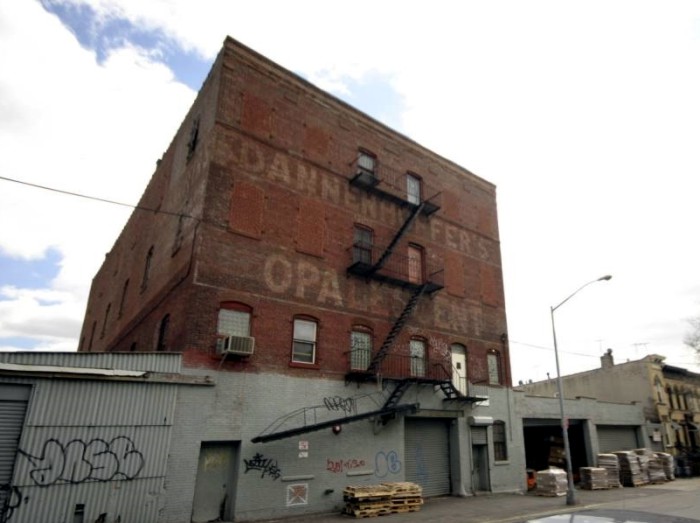

Brooklyn, one building at a time.
Name: Former Dannenhoffer’s Glass Works
Address: 330 Himrod Street
Cross Streets: Wyckoff and Irving Avenues
Neighborhood: Bushwick
Year Built: around 1888
Architectural Style: Victorian factory
Architect: probably Theobald Engelhardt
Other Buildings by Architect: Factories, breweries, warehouses, flats buildings, row houses, churches and free standing houses throughout Bushwick, Williamsburg and eastern Bedford Stuyvesant.
Landmarked: No
The story: Yesterday’s Brownstoner story about a new building incorporating this old factory in Bushwick led me here. I love stained glass and didn’t know about the Dannenhoffer Opalescent Glass Company. I was determined to find out whatever I could about the building, the company, and the people behind it. It turns out that this forgotten Bushwick factory has quite a history.
The founder of the glassworks was John Dannenhoffer, who came to New York as an adult from what was at the time the German province of Lorraine. He and his brother Nicholas came here during the Civil War and after landing in New York were not able to find work. They sailed upstate to Albany and worked on a farm until the war’s end. Returning to NYC, Dannenhoffer took employment in a glass factory, a trade he had learned in Germany. He and his brother and a third man soon opened their own glass company. By 1871 Dannenhoffer and partners had established the Williamsburg Flint Glass Company in Brooklyn.
John began experimenting with the production of opalescent glass, a special colored glass used in decorative and stained glass. The early colors were a milky white and a brilliant blue, but experimentation by Dannenhoffer, Tiffany and others would later result in all kinds of colors, produced by adding various chemicals and additives to the silica while it was melting. Further folding and pressing of the molten glass would produce the beautiful textures and colors that characterize the Tiffany, LaFarge and other late Victorian studios’ stained glass works.
Nicholas Dannenhoffer kept control of the Williamsburg Flint Glass Company while John opened up the Dannenhoffer Glass Works, specializing in opalescent glass. The building appears to have been in this location since at least 1888. It was probably designed by Theobald Engelhardt, the prominent German -American architect who designed most of the Eastern District, it seems. He specialized in factories, warehouses and breweries, as well as churches and homes of all kinds. I was not able to find the specific reference to this building, but Engelhardt designed all of the other Dannenhoffer factories and he is also on record for alterations on this building, as well as for additions and stables built to add to this factory complex.
John Dannenhoffer died in 1889, and the business was taken over by his son, John Lewis. Junior had been educated in Brooklyn parochial schools and had taken advance college courses in chemistry. He joined the family business at the age of 18. He inherited his father’s affinity for opalescent glass and took the company farther with experiments in different chemical and additives. He and his younger brother, also named Nicholas, like his uncle, became Brooklyn’s premiere opalescent glass makers, selling their brilliantly colored rolled glass sheets to stained glass studios and factories where they were cut up for windows, lampshades and other uses.
In 1905, the New York Times did a full page piece on stained glass, interviewing John Dannenhoffer in Brooklyn, and stained glass artist Gabriel Chenes, who worked out of his studio in Greenwich Village. The reporter called Dannenhoffer “an alchemist,” praising his skill in tossing chemicals and substances like gold dust into melting sand. He marveled at how the gold dust made the glass a brilliant ruby red. Dannenhoffer explained how hit and miss this process could be, as the wrong formula, or wrong temperature could make the glass useless.
Dannenhoffer guided the Times reporter through the factory, showing him the furnaces and crucibles of molten glass, He showed him how the lumps of glass were deftly flipped onto the metal tables and the rollers that pressed it into sheets. Those sheets were sent to ovens that gradually cooled the glass down to room temperature without cracking it.
They walked through a vast warehouse of plate glass in all kinds of colors, and finally to the furnaces of the workers making drapery glass, which was poured, pressed, flipped and folded to produce glass that looked like draped fabric. This glass was invaluable for the robes and clothing worn by the characters in stained glass window. Dannenhoffer ended the tour by saying that where his glass ends, the work of the artist begins.
John Dannenhoffer died way too early five years after that interview, at the age of 40, in 1910. He came down with a severe cold from too many trips from the heat of the factory to the coolness of his office. That cold turned into pneumonia, which he did not survive. John and his wife Lena had two daughters, the eldest dying as a baby. He left most of his estate to his only surviving child, Mary. She became one of the great heiresses in Brooklyn at the time, as her father’s estate was worth several million dollars.
John Dannenhoffer’s brother Nicholas took over the business. But he died of gastritis not long afterwards, in 1916. He was only 43. John’s daughter was a college student at St. Francis College, and did not seem interested in the glass businesses. Nicholas’ five children were active in Brooklyn and Queens social life, but I found no mention of their involvement in the family business. The company is not mentioned in the estate’s portfolio.
It was now the 1920s, stained glass was no longer as fashionable, and business would have been scarce.
Dannenhoffer Glass Works may have also died with the passing of patriarch John Dannenhoffer’s sons. Today, there are only one or two companies still making opalescent glass in the United States. They still make it the same way John Dannenhoffer did. The new building planned for the greater Dannenhoffer site will include the main factory building, as shown in the model. The modern additions appear to utilize glass elements that are opalescent. How fitting. GMAP
(Photo:Scott Bintner for Property Shark)
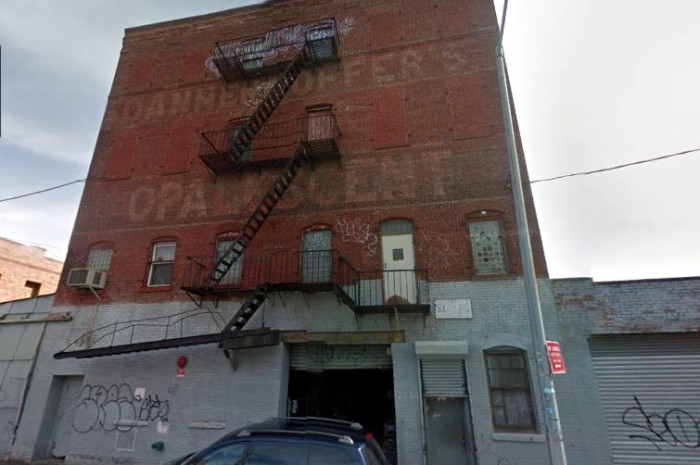
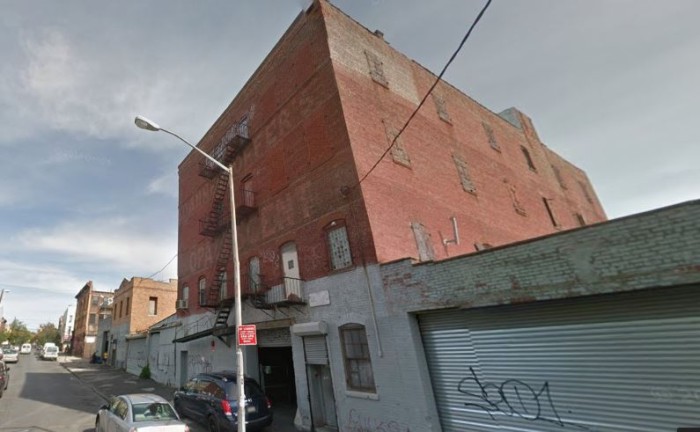
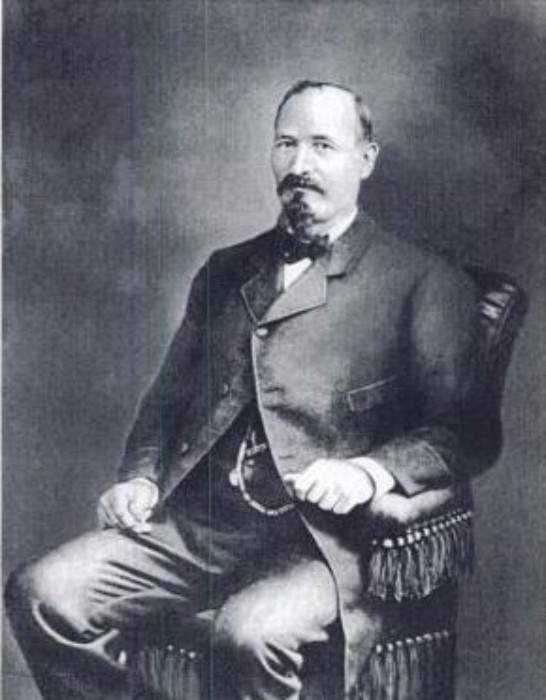
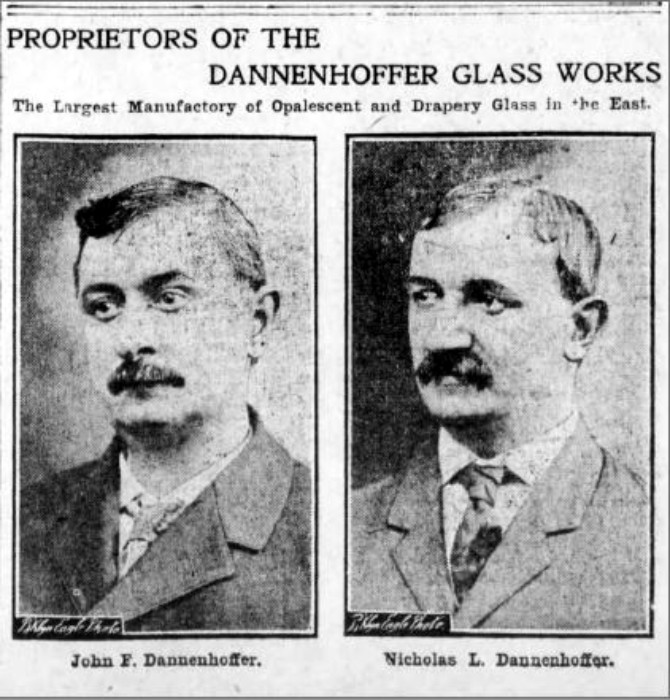





What's Your Take? Leave a Comment